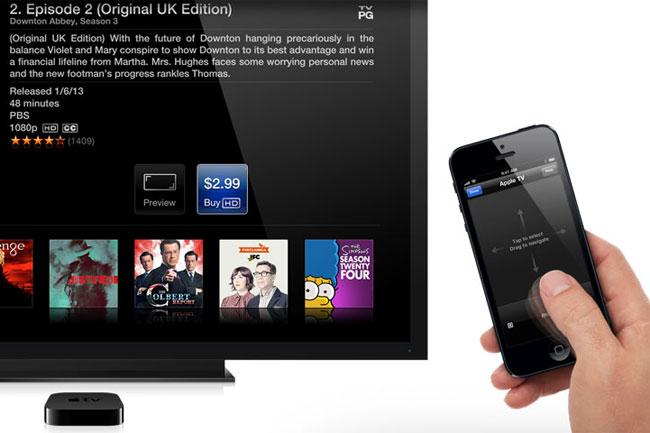
You can already use your iPhone to control your Netflix streaming, home security cameras and sprinkler system, but in the future, the humble smartphone may become even more powerful. A recent report from AppleInsider reveals that Apple has secured a patent that would allow it to transform its mobile devices into supercharged universal remote controls.
The recently secured patent outlines a broad control system for the iPhone, which would integrate with not only basic home theater components like TVs, A/V receivers and game consoles, but also environmental systems and smart home devices. The interface would be able to “recall, store and set things like lighting, channels, music and window shades” under “scenes” that could be named by the user.

Apple’s expansion into multimedia control certainly stirs up conjecture that the company may be building more enticing options for an Apple television, if and when it goes into production. For now, the new remote system has us asking a more practical question: How would it work? The iPhone 5 doesn’t have an infrared (IR) blaster, or radio-frequency (RF) transmitter, which severely limits the proposed system’s ability to control devices that use these protocols for basic functions like powering on, channel control, and so on.
One simple solution would be a hub device (like Logitech’s Harmony Ultimate Hub), which connects to a local network, receives commands from the iPhone via Wi-Fi, and retransmits them housewide through IR and RF blasts. Using the hub as a “translator,” the iPhone could effectively talk with gaming consoles, Blu-ray players, TVs, and almost any other device that can use a remote. Either that, or the iPhone 5S will need to come with some very specific hardware upgrades.
One thing’s for sure: Like most Apple rumors, the company’s proposed venture into the realm of multimedia control brings up more questions than answers. Apple applied for the patent five years ago, so implementation could have already been scrapped – or still years away. In the mean time, there’s still hope. Other new devices like Philips’ hue LED lighting make the once-outlandish idea of manipulating an entire room from a single device much more feasible – and not just for the super rich.


